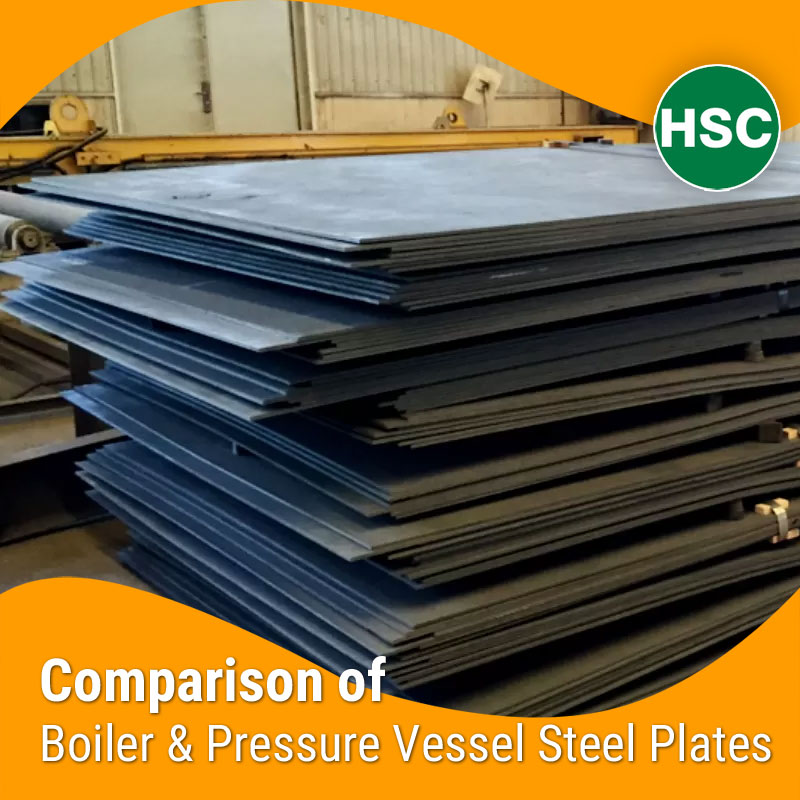What Is the Difference Between HIC Tested and Non-HIC Boiler Plates?
The key difference lies in their resistance to Hydrogen Induced Cracking (HIC).
- HIC Tested Plates undergo specialized tests as per NACE TM0284 to ensure they can survive sour environments with H₂S, moisture, and acidic gases.
- Non-HIC Boiler Plates (like standard SA 516 Gr 60/70) are not validated against HIC. They’re suitable for general pressure vessels but not for sour gas or acid-prone applications.
Why Does Hydrogen Induced Cracking Matter in Boilers?
In pressure vessels operating in refineries, petrochemical, and chemical industries, hydrogen sulfide (H₂S) reacts with water vapor, forming acidic condensates. This leads to:
- Micro-cracks inside the steel
- Weakening of wall thickness
- Sudden failure under pressure
Using non-HIC plates in such environments is a major risk.
Application Comparison Table
| Property | HIC Tested Plate | Non-HIC Boiler Plate |
|---|---|---|
| Sour gas resistance | ✅ Yes | ❌ No |
| H₂S Environment | ✅ Safe | ❌ Not recommended |
| Test Standard | NACE TM0284 | General mill test |
| Price | Slightly higher | Lower |
| Common Grades | SA516 HIC, A516+HIC, SA387 HIC | SA 516 Gr 60/70 |
Mechanical Properties: HIC vs Non-HIC
| Property | HIC Tested (A516 HIC) | Non-HIC (A516 Gr 70) |
|---|---|---|
| Yield Strength | 260–285 MPa | 260–285 MPa |
| Tensile Strength | 490–620 MPa | 490–620 MPa |
| Elongation | ≥21% | ≥21% |
| HIC Resistance | Proven | Not Tested |
Conclusion: Mechanical values are similar, but HIC plates undergo extra testing and selection to ensure resistance in sour services
Certification Checklist
| Test / Cert | HIC Plate | Non-HIC Plate |
|---|---|---|
| NACE TM0284 | ✅ Yes | ❌ No |
| IBR Form IIIA | ✅ Optional | ✅ Optional |
| UT / Impact | ✅ Standard | ✅ Standard |
| CE Marking | ✅ Available | ✅ Available |
When Should You Use HIC Tested Boiler Plates?
- Your equipment operates in sour gas service (H₂S)
- You are building refinery vessels, heat exchangers, or amine units
- NACE MR0175 / ISO 15156 or other international specs mandate it
- Failure due to hydrogen attack could cause shutdown or hazard
Standards and Equivalents
| ASTM Grade | Equivalent |
|---|---|
| A516 Gr 70 | IS 2041, EN 10028 P295GH |
| A387 Gr 11/22 | BS 1501, EN 10028-2 16Mo3, DIN 17155 HII |
Why Hindustan Steel for HIC & Non-HIC Plate Needs?
We stock and export both variants with 100% traceability, test reports, and cutting/fabrication options:
- SA 516 Gr 70 (General use)
- SA 516 Gr 70 HIC Tested (Refinery & Sour Service use)
- SA 387 Gr 11/22 HIC (Elevated Temp + Sour)
- Custom HIC-tested options from 6 mm to 100 mm
- IBR + CE + NACE + 3.1/3.2 Certified
Cost Comparison: Is HIC Plate Worth the Price?
Yes. Though HIC plates cost 10–15% more, they prevent billion-rupee losses due to shutdowns, pipe bursts, or acid leaks in sour environments. For high-risk media, they are not optional—they’re essential.
Export & Domestic Supply
We supply HIC and non-HIC boiler plates to:
🔹 UAE, Saudi Arabia, Oman, Vietnam, South Africa
🔹 Refinery EPC contractors, chemical plant fabricators, oilfield equipment manufacturers
🔹 With MTCs, NACE reports, IBR approvals, and project tags
FAQs for HIC Tested vs Non-HIC Boiler Plates
What does HIC mean in boiler plates?
HIC stands for Hydrogen Induced Cracking, a common issue in sour gas service. HIC plates are tested to prevent it.
Can I use normal boiler plates in acid environments?
No. You must use HIC-tested plates or internal coating to prevent cracking and failure.
Are HIC plates available in A516 Gr 70?
Yes, we supply A516 Gr 70 HIC-tested plates with NACE TM0284 compliance.
Is HIC testing mandatory in refinery applications?
In most NACE-compliant refinery or gas projects, HIC testing is either mandatory or strongly recommended.
Can IBR plates also be HIC tested?
Yes, we provide dual-certified HIC-tested + IBR-approved plates for Indian process industries.

